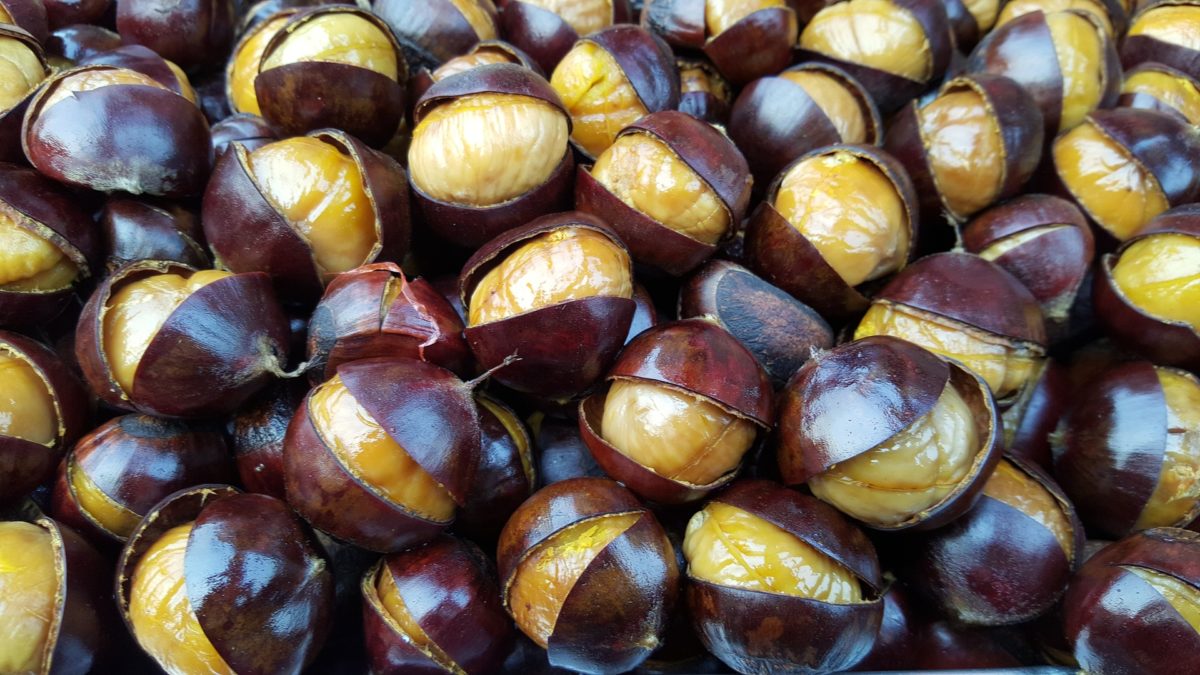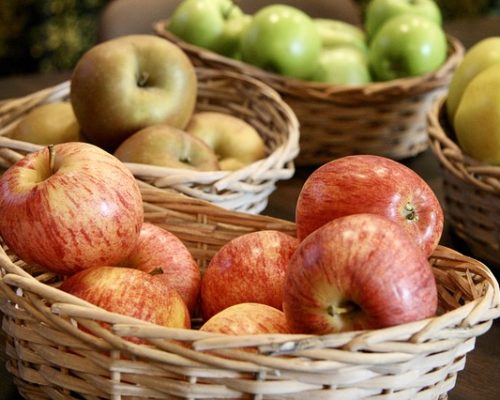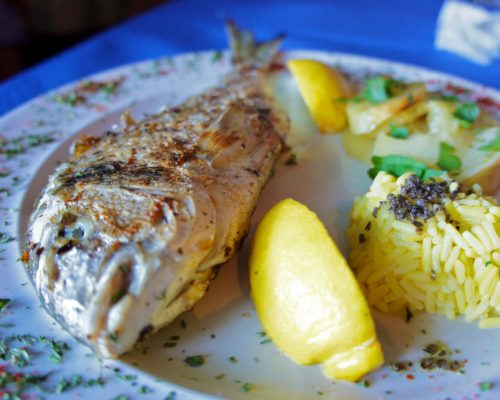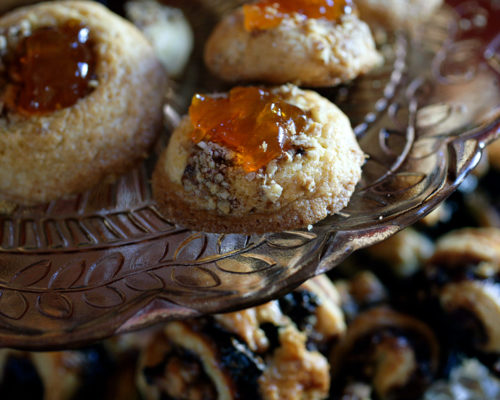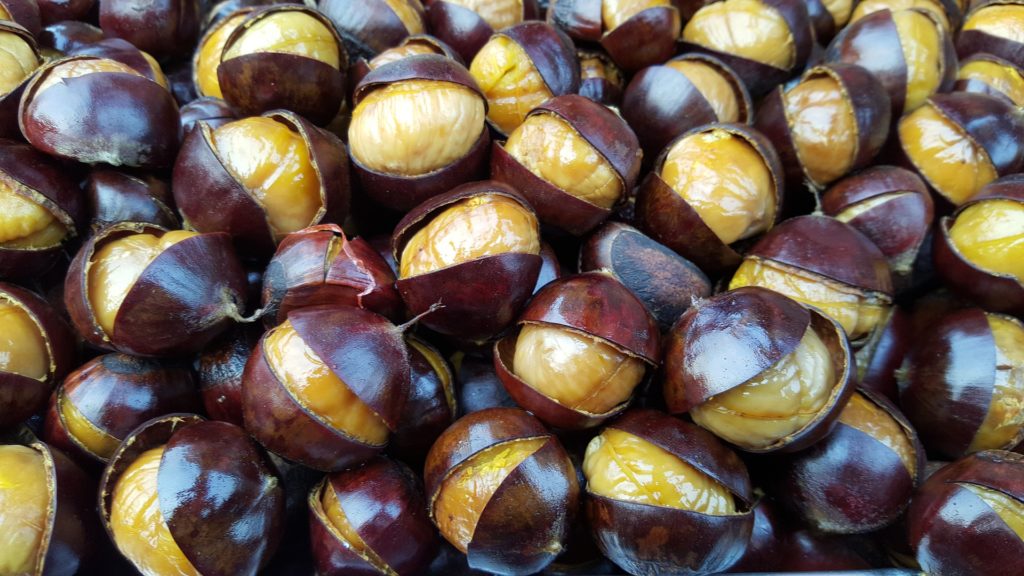
Each year from mid to late September my property is blessed with manna from heaven! This is the time of the year when rich, reddish brown beauties, along with their spiny green housing (which are abandoned once they ripen), litter our property waiting to be gathered and stored away for the season.
The downside to this fall harvest is the incredible mess that is left behind, however, quickly forgotten once I pull the first batch of roasted chestnuts from the oven.
Many of you who have read my articles in the past know that a prerequisite for almost anything I recommend is that it first and foremost has to not only taste good but it also must be good for you. Chestnuts are no exception. Far from the everyday average nut, chestnuts have a number of important health benefits, including supporting digestive health and aiding in strengthening bones, and studies have found them to help those dealing with diabetes in that they help to maintain healthy insulin levels. And if that is not enough, like other nuts, they can also benefit cardiovascular health, boost the immune system and help to lower blood pressure.
Note: As a precaution, you should always consult with your doctor if you have health issues and use any references in this article for informational purposes only. In addition, if you have a nut allergy, it is advisable to also consult with your doctor before consuming chestnuts.
Having said that, here’s a bit of background on this amazing nut.
Chestnuts are edible nuts that are typically found throughout the northern hemisphere. Edible chestnuts should not be confused with the inedible variety known as horse chestnuts, which are highly toxic. Edible chestnuts have a visibly pointy top that feels very much like a needle when you rub you finger across the skin. The spiny green casing is the outer covering, and the brown nut is what is inside.
The most common way to enjoy chestnuts is by roasting. However, they can also be boiled, pureed, ground into flour for bread-making, deep fried or even candied. One of my favorites, after roasting, is to use them for stuffing during the Thanksgiving and Christmas holiday season.
Chestnuts are very high in fiber, minerals, antioxidants and “good” fats. Unlike most other nuts, the fat content in chestnuts is very low, and they are rich in carbohydrates.
Chestnuts can be stored successfully by freezing. To freeze, be sure to partially cook them by either roasting (instructions follow) or boiling, as the chestnuts’ flesh will break down and become quite mushy when stored raw. Once you’re ready to eat, complete the roasting or boiling process just until done.
If you are not lucky enough to be able to harvest them fresh, you can always check out your local supermarket or specialty store. Here is a quick and easy recipe for roasted chestnuts:
Roasted Chestnuts
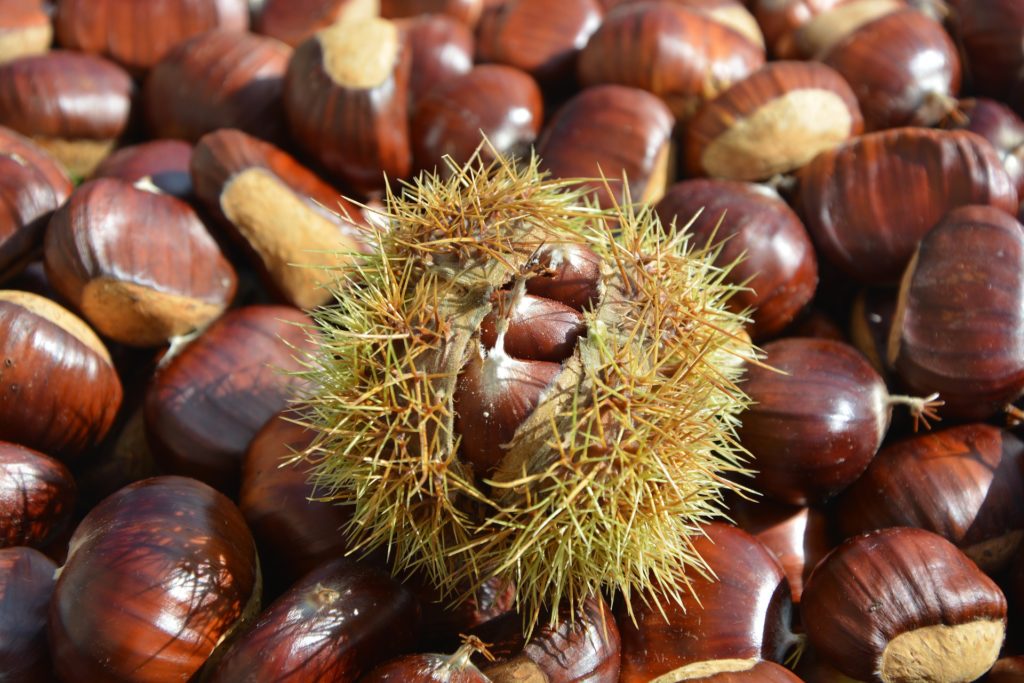
ingredients
• Raw chestnuts
• Spicy seasoning mix (sea salt, cayenne, sweet paprika black pepper) or Old Bay seasoning
instructions
Preheat oven to 400 degrees. Wash and dry chestnuts. Using a very sharp knife, cut crosswise slits in the flat side of each chestnut and place onto a cookie sheet or roasting pan; single layer. Roast for about 10 minutes or until slits in the skins curl and you achieve a nutty-roasted aroma. Remove from the oven and peel away the shell once they are cool enough to handle. Place spices in a brown paper bag and add nuts. Shake until nuts are coated.
For additional tips on how to use chestnuts, please email me at bonnie@bonniemcdanielgoodliving.com
Enjoy!

